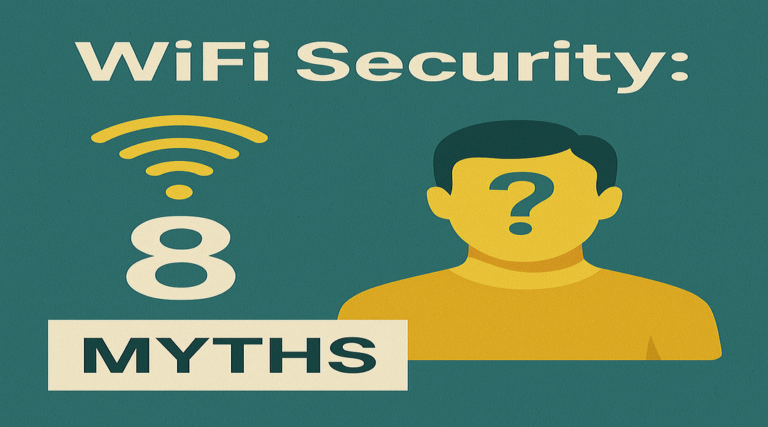Network Security: 6 Steps to Secure Your Home Network
In today’s hyperconnected world, network security is more critical than ever. Cyber threats are evolving at an alarming rate, targeting businesses and individuals alike. A single cyberattack can lead to devastating financial losses, data breaches, and reputational damage. According to a recent report, cybercrime is expected to cost the global economy over $10 trillion annually by 2025. One real-world example is the 2021 Colonial Pipeline ransomware attack, which disrupted fuel supplies across the United States and cost the company millions.
With hackers constantly seeking vulnerabilities, ensuring your home and business networks are secure is not an option—it’s a necessity. Network security safeguards your digital assets, personal information, and business operations from cybercriminals. Whether you’re an individual working remotely or a business owner handling sensitive client data, implementing strong security measures is vital.
The good news? Protecting your network doesn’t have to be complicated. This guide will walk you through essential steps to secure your home network effectively. Let’s dive in!
Table of Contents
What is Network Security?
Network security refers to the strategies, technologies, and practices used to protect networks, systems, and data from cyber threats. It encompasses various measures, including firewalls, encryption, intrusion detection systems, and more, to safeguard digital assets.
Think of network security as the lock and alarm system for your digital house. Just as you wouldn’t leave your front door open for intruders, you shouldn’t leave your network exposed to cybercriminals. By securing your network, you ensure data privacy, prevent unauthorized access, and protect sensitive information.
Let’s explore why network security is crucial for both individuals and businesses.
Why You Need Network Security
1. Protection Against Cyber Threats
Cyber threats such as malware, phishing, ransomware, and DDoS attacks can compromise your network, leading to financial loss and data breaches. Network security helps mitigate these risks by implementing robust defense mechanisms.
2. Financial and Data Security Benefits
A data breach can cost businesses millions in fines, lost revenue, and recovery expenses. Implementing strong network protection reduces the risk of costly cyberattacks and ensures your data remains safe.
3. Compliance with Security Regulations
Regulations like GDPR, HIPAA, and PCI-DSS mandate stringent security measures. Organizations must adhere to these guidelines to avoid legal consequences and protect customer data.
How to Implement Network Security
Quick Overview
A strong network security system includes firewalls, encryption, authentication protocols, and security monitoring tools. Regular updates, proactive monitoring, and employee awareness are essential to maintaining security.
Key Components of Network Security
- Firewalls – Act as a barrier between trusted and untrusted networks.
- Intrusion Detection and Prevention Systems (IDPS) – Detect and mitigate unauthorized access attempts.
- Virtual Private Networks (VPNs) – Encrypt data transmissions for secure remote access.
- Endpoint Security Solutions – Protect devices from malware and unauthorized access.
- Multi-Factor Authentication (MFA) – Adds an extra layer of authentication security.
- Data Encryption – Protects sensitive information from unauthorized access.
- Security Information and Event Management (SIEM) – Monitors and analyzes security events in real time.
Step-by-Step Guide to Strengthening Network Security
- Assess Network Vulnerabilities – Conduct network penetration testing to identify weaknesses.
- Configure Firewalls Properly – Use firewalls like Barracuda Firewall for small businesses to filter traffic.
- Implement Strong Access Controls – Limit access to sensitive data and use role-based permissions.
- Regularly Update Software and Firmware – Keep operating systems and security tools up to date.
- Enable Network Security Monitoring – Use intrusion detection systems to detect threats in real time.
- Educate Employees on Cyber Hygiene – Train staff on phishing threats, WiFi security, and password management.
What to Combine Network Security With
Enhance your network security by integrating additional security measures:
- Cloud Security Solutions – Protect cloud-based assets from cyber threats.
- Zero Trust Architecture – Verify every access request before granting permissions.
- AI-Powered Threat Detection – Use AI-driven security solutions to detect and respond to threats.
- Cyber Hygiene Training – Regularly educate users on safe browsing and email practices.
Top Tips for Strengthening Network Security
- Use strong, unique passwords and enable Multi-Factor Authentication (MFA).
- Configure firewalls and VPNs correctly to block unauthorized access.
- Conduct regular network penetration testing to identify security gaps.
- Avoid common mistakes like weak passwords, outdated software, and unsecured WiFi networks.
Storing and Managing Security Logs
Security logs provide valuable insights into network activity and potential threats. Best practices for managing security logs include:
- Use SIEM Systems – Automate log collection and analysis.
- Encrypt Log Files – Protect logs from unauthorized access.
- Regularly Review Logs – Monitor logs for unusual activity and potential breaches.
FAQ
1. What is the best firewall for small businesses? The Barracuda Firewall is a great option, offering advanced threat protection and easy configuration for small businesses.
2. How does network penetration testing improve security? It helps identify vulnerabilities in your network so you can fix them before cybercriminals exploit them.
3. What are the key benefits of network security monitoring? It provides real-time threat detection, prevents cyberattacks, and ensures compliance with security regulations.
4. Why is WiFi security important? Unsecured WiFi can be exploited by hackers to access your network and steal sensitive data.
5. What are the best network security solutions for businesses? Firewalls, intrusion detection systems, SIEM platforms, and endpoint security solutions work together to create a strong defense.
6. How do network security providers help businesses? They offer expert guidance, tools, and monitoring services to ensure networks remain secure.
7. What’s the difference between an intrusion detection system (IDS) and an intrusion prevention system (IPS)? An IDS detects suspicious activity, while an IPS actively blocks threats before they can cause damage.
Securing your network is an ongoing process, but with the right tools and practices, you can protect your data and digital assets from cyber threats. Start implementing these security measures today and stay ahead of cybercriminals!







